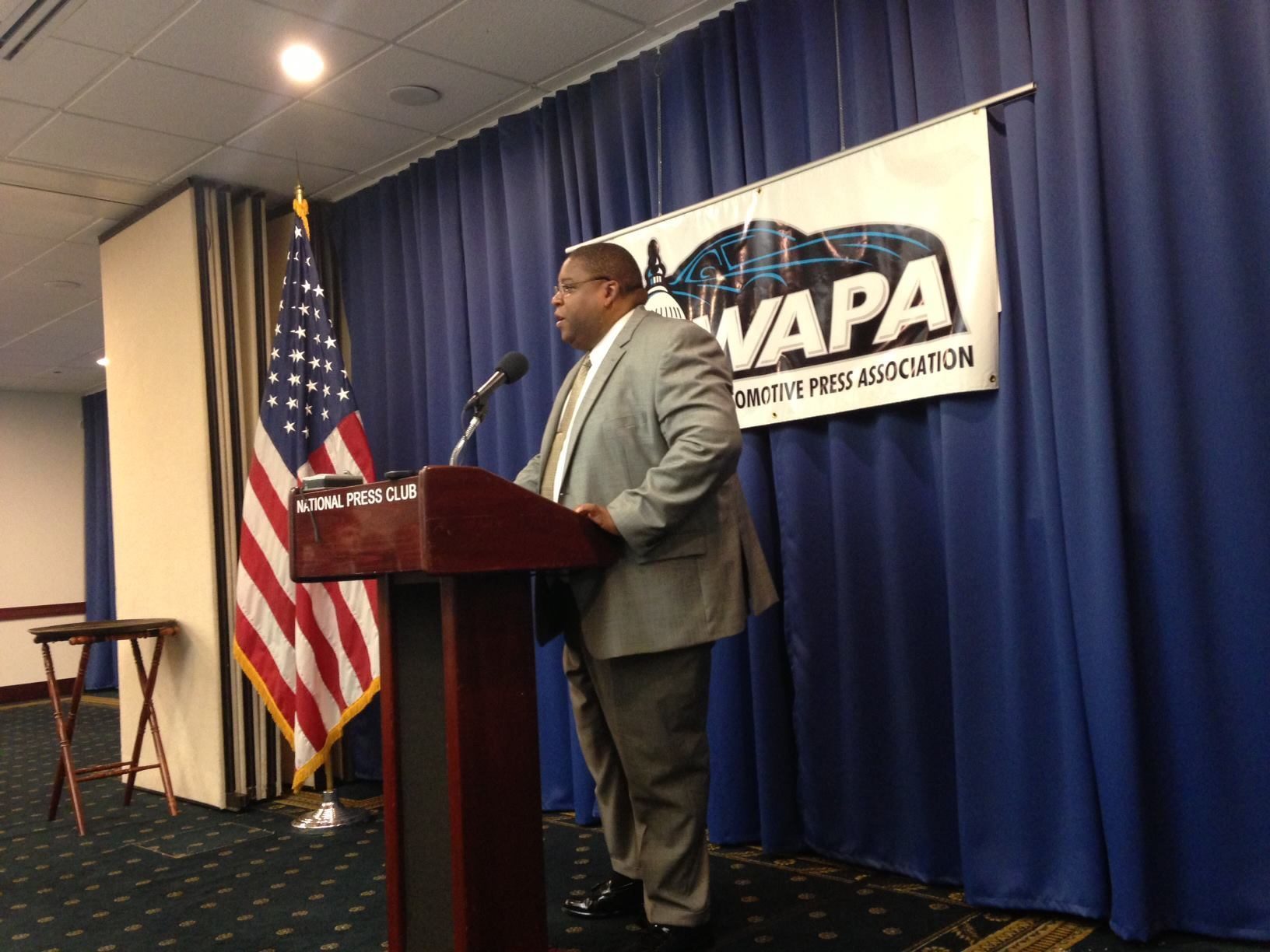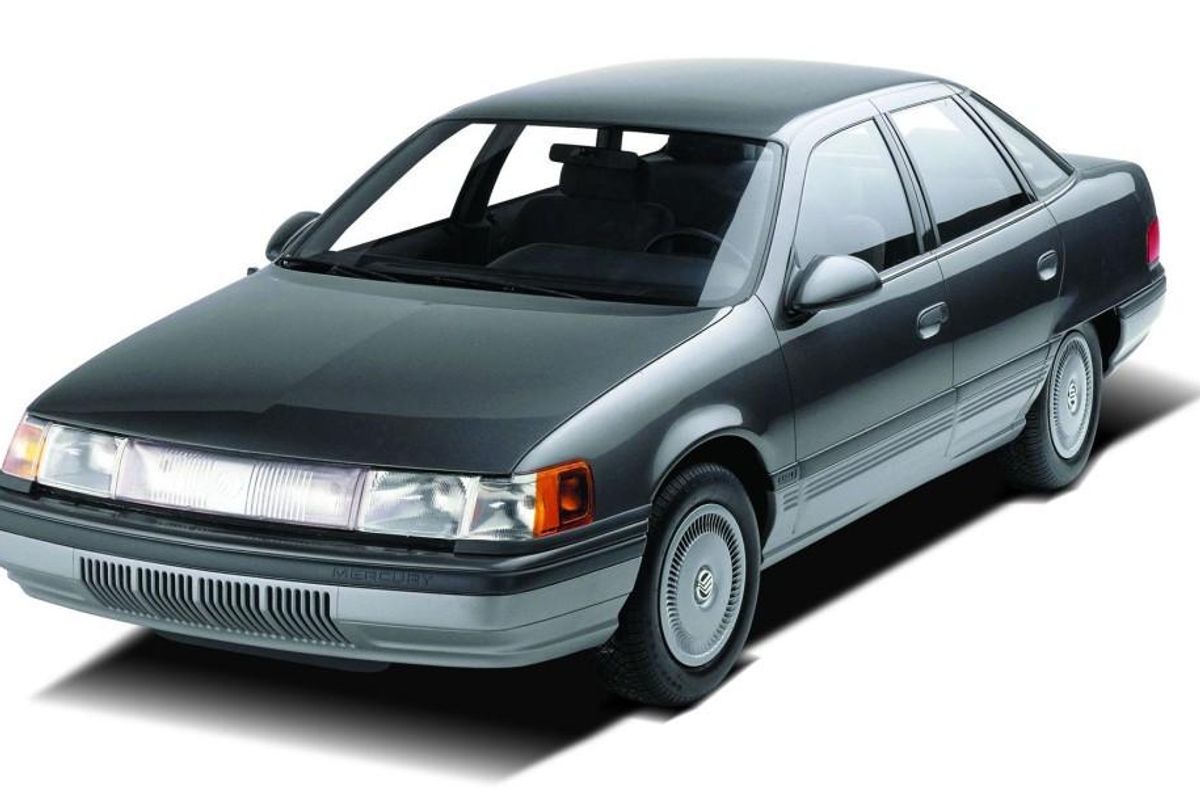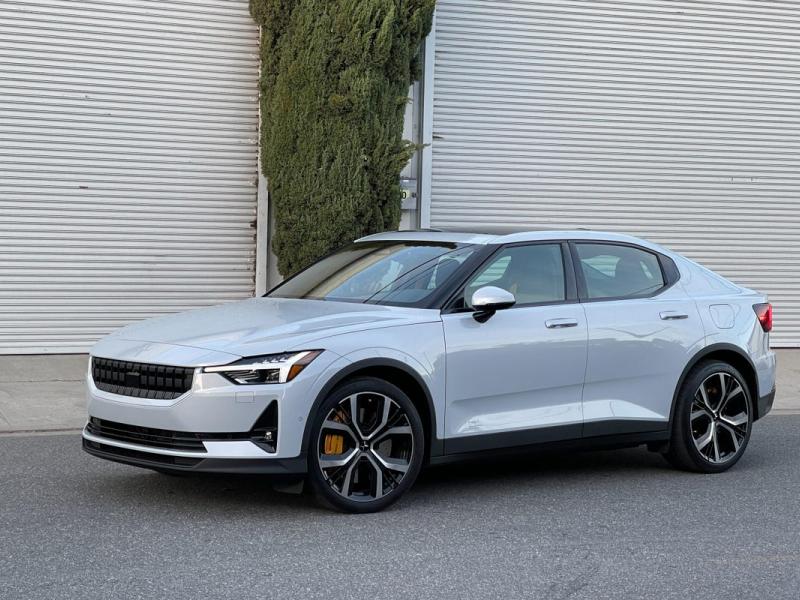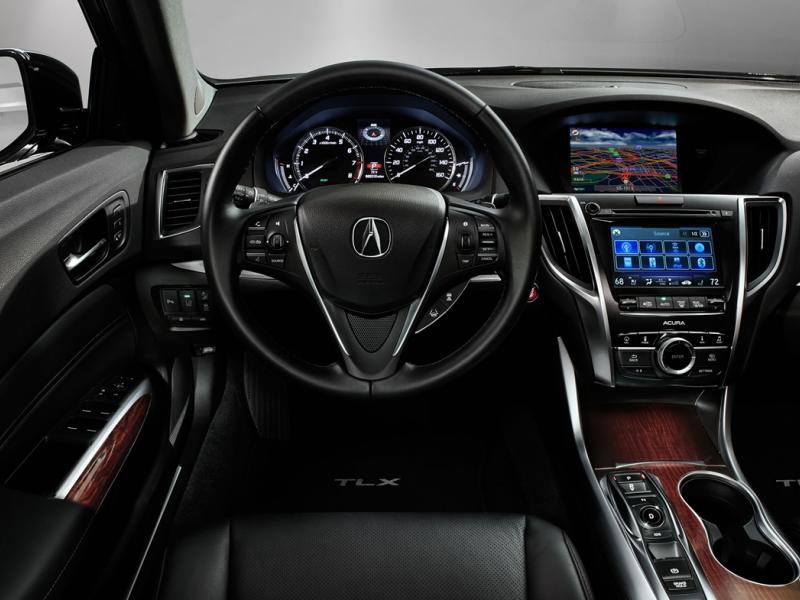NHTSA Administrator Strickland Speaks to WAPA Members
Sat, 08/24/2013 - 00:57
NHTSA Administrator David Strickland speaks to a group of journalists and auto manufacturer representatives at the August WAPA luncheon.
The Washington Automotive Press Association (WAPA) hosted David Strickland, the 14th Administrator of the National Highway Traffic Safety Administration (NHTSA), for an update from the agency. At a luncheon held in the National Press Club, Strickland addressed a group of about 40 journalists and auto manufacturing representatives.
The event came on the heels of an announcement where NHTSA issued a new rule to provide free VIN searches to help consumers check cars, light trucks and motorcycles for uncompleted recall work. The plan would require automakers and motorcycle manufacturers, starting in 2014, to provide consumers a free online tool for them to openly search recall information by Vehicle Identification Number (VIN).
Strickland mentioned that manufacturers would ideally update these systems to notify consumers on a weekly basis about vehicles, new or used, that have active recalls. He went on to champion the “collaborative power” that his agency and manufacturers could have together, resulting in consumers having multiple ways to access this information.
“We are the largest transportation mode,” said Strickland, “But we’re also a consumer product.” The Administrator explained how NHTSA can serve as a consumer protection conduit by providing actionable information to people so that they can make better decisions.
Vehicle Technology Offerings and Safety Collide
Administrator Strickland also discussed the intersection of safety and technology, noting that he wants to ensure that the rules and policies put forth don’t inhibit the fun of driving. “At the end of the day,” he said, “If the American public isn’t interested in purchasing a new car – [and appreciating] the advances we’re making – then we don’t have anything.”
“The point here is to make the driving experience still enjoyable,” Strickland added.
Nearly 90 percent of crashes involve the element of human error – a “stubborn number” to chip away at according to Strickland. Today, 50 percent of vehicle fatalities are still unbelted – that’s after decades of “Click it or Ticket” campaigning and the awareness that buckling your seat belt is the easiest way to give yourself a chance at survival in a serious crash.
“Behavioral programs have truly moved the needle,” he said, but certain percentage numbers are still challenging.
Crash avoidance technologies have been a major player in taking the human factor out of the equation, where a knee-jerk reaction from a driver could cause more of a problem than a solution. The next major challenge, according to Strickland, is to help steadily deploy these types of technologies throughout the fleet.
Autonomous Vehicles and Driver Distraction
Strickland isn’t sold on autonomous vehicles being the best route for solving the distracted driving dilemma. “Taking the driver out of the loop may not be the best solution,” he told the room full of media and industry representatives.
“The ‘co-pilot’ concept may be the one that more consumers are comfortable with,” Strickland concluded. These technologies support the driver but the driver still ultimately has control and can intervene.

[{"target_id":"255202","alt":null,"title":null,"width":"1632","height":"1224","url":"\/sites\/default\/files\/articles-images\/0a\/nhtsa-administrator-strickland-speaks-to-wapa-members-1.jpg"}]




